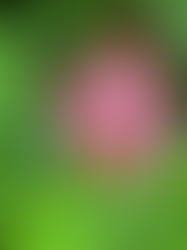Homeschool Garden Club – What We Have Learnt About Bees in Our Gardens
- Nicola Walsh

- Apr 27, 2021
- 2 min read
Two years ago, after a chance question by one of our Garden Club members about why I didn’t have any flowers in my own garden in the later part of the year, we have been focused on bees and their needs.

We made contact with the lovely people at the Bumblebee Conservation Trust, and this year will be visiting them again for a school trip to learn more.
We have already learnt that commercially bees play a key role in pollinating many crops and are estimated to be worth millions of pounds to the UK economy. Some 35% of our diet depends on pollination of crops by bees and it is often said that if bees died out, humans would follow just four years later, a statement sometimes attributed to Albert Einstein.
Bees also play a key role in our gardens, particularly in the vegetable plot, and in pollinating flowers which would be unable to produce seed without pollination.
From our visits to the trust and the charts that the Bumblebee Conservation Trust we found out there are two main types of bee; the Bumblebee and the Honeybee. Populations of both have suffered huge declines in recent years for a number of different reasons so it is worth knowing the difference.

If you are encouraging bees into your garden then it is important to avoid using insecticides as these will kill helpful pollinating insects (including bees) as well as the target insects.
Make a Bee House
Remember that different species require different habitats. Mason Bees enjoy nesting holes in wood or thick stems. You can make your own simple bee house or you can buy a commercially made bee house. Use hollow bamboo canes, dried Japanese knotweed stems or even thick bramble stems. Fix bee boxes in a south-facing spot but not in direct sunlight. Also make sure the entrance points downwards so that rain does not get in.
Many other species of bumblebee will prefer a wood pile in your garden. Simply create a pile of logs, stems and branches and leave it be - the untidier, the better! Other species will enjoy a grassy bank to nest in - let the grass grow tall and plant pollen rich plants along the edge of the bank.

As a result of our work last year many of our gardens are far more bee friendly. As a part of the challenge we have been planting pollen rich flowers with different flowers shapes and flowering from December through to late September. Although many of us love the fancy flowers, we have learnt the double flower forms are often lack the pollen or nectar the bees like.
This year we are adding another bed that will benefit both the bees and the butterflies. the plant list includes: buddleja, digitalis, aquilegia, verbena, hebe, hellebores, premolar Veris, pulmonary and geranium.
We will be growing sunflowers for the birds, look out for our sunflower challenge.



























Comments